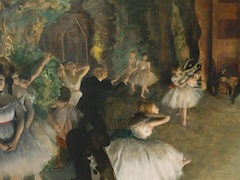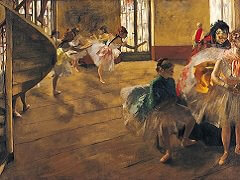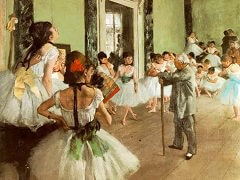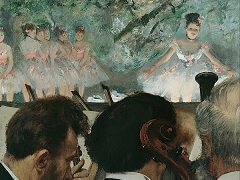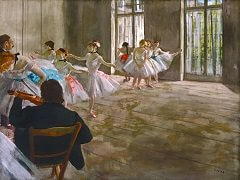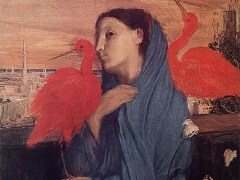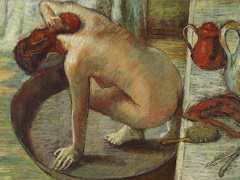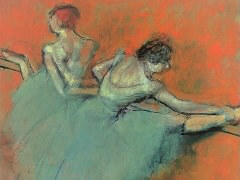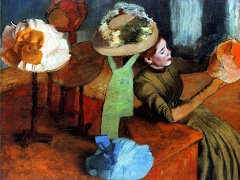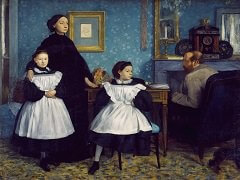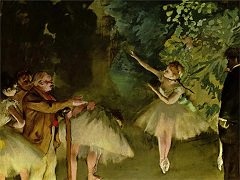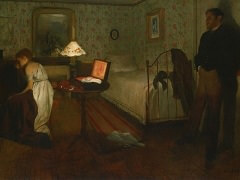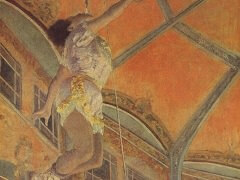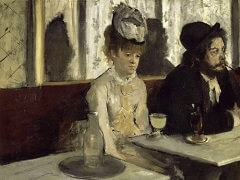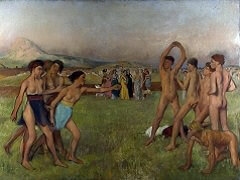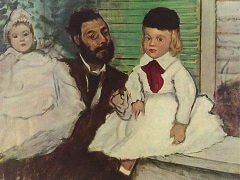The Rehearsal, 1873 by Edgar Degas
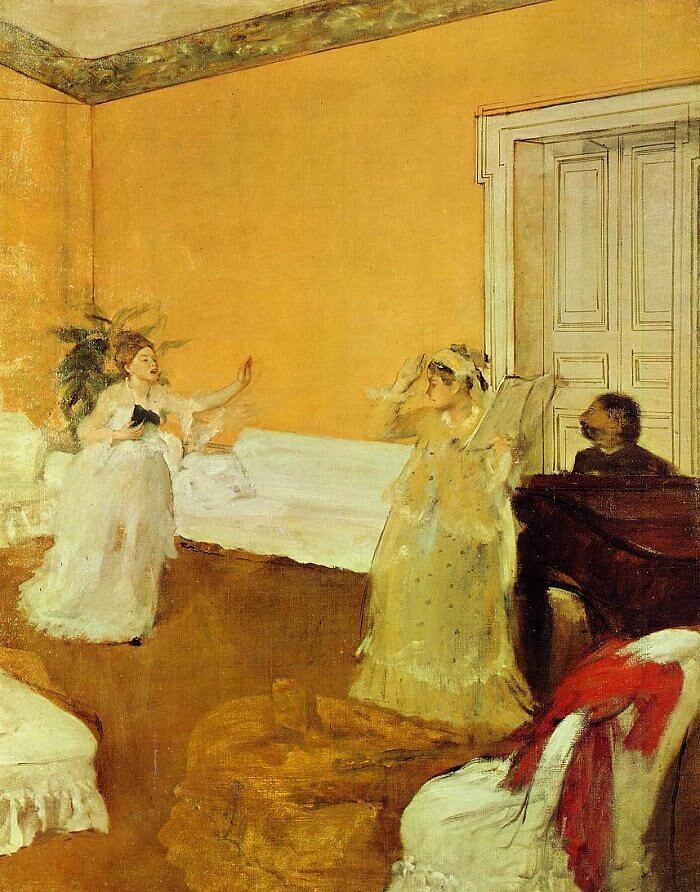
Edgar Degas must have witnessed many such scenes in his own home for his father was passionately fond of music and various talented performers were constantly on hand for musical evenings. Here he used his sister, Marguerite, herself an accomplished singer, for both women - sa characteristic Degas touch. His conception of personality seems to have been that with each new moment one became a new person, and he liked to paint the same model over and over, seeking a different meaning in each attempt.
This picture, with its delightful and unusual color scheme, gives off the atmosphere of the Second Empire but at the same time shows the artist's originality. He has angled the room to suggest a snapshot view and caught a suspended moment of action with an almost camera-like fidelity. The opposition between the two figures sets up a tension to which the interval of space between them importantly contributes. Undoubtedly, as certain ground plans of his paintings indicate, Degas imagined a real setting into which he inserted his figures, brilliantly employing perspective to heighten the effect. Here the scattering of the furniture round the empty space in the center and the unusual eye level intensify the feeling that we have suddenly come into a room and caught the three figures in a dramatic moment. With what restraint and skill has Degas rendered their significant gestures!
The sketchy state of the picture shows that it is unfinished. For some reason or other the artist put it by and it appeared only at the sale held after his death.

